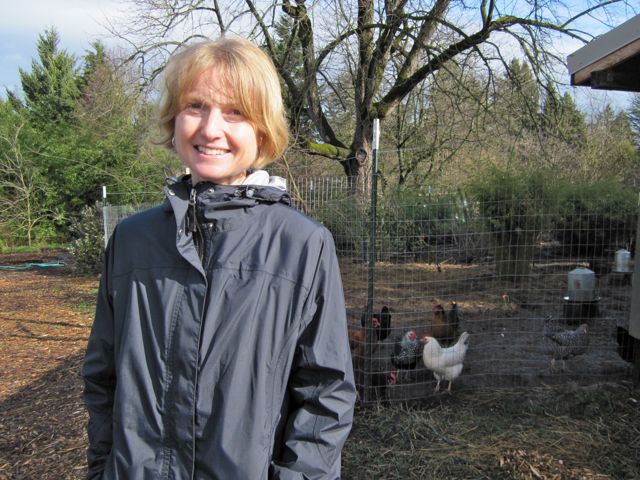
reference-image, l
(article, Liz Crain)
[%pageBreakSettings nobreak=true] Transgenesis isn't necessarily a science we're all taught in school. But it's in our supermarkets, and often on our dinner plates, in the form of genetically modified food. Should we eat genetically modified food, or not? Molecular biologist Lisa Weasel spent several years researching the ethics and issues surrounding GM food. She spelled out her findings in an easy-to-read way in her 2008 book, Food Fray. For anyone wanting to explore the questions surrounding GM food, Weasel's book is a must-read. Here are eight takeaways from Food Fray. [[list(culinate8). #(clear n1). Definition: GM foods are created in a laboratory by scientists who take genes from one species (usually from bacteria) and put them into a food-crop species. This is different from conventional breeding, which requires reproductive compatibility. Most GM crops are created for herbicide tolerance and insecticide traits. (If you want to learn more about genetically engineered meat and fish, read Becky Kessler's recent article on Culinate.) #(clear n2). Mainstream GM crops: Soy, corn, canola, and papayas are the most widely produced GM foods worldwide. Genetically modified rice and wheat have been created but not yet commercially grown. Ninety-five percent of the sugar-beet crop in the U.S. is genetically modified, but a recent federal ruling may have a huge impact on that. #(clear n3). [%image reference-image float=right width=400 caption="Lisa Weasel wrote a book on genetically modified food."] When it all began: The technologies that led to genetically modified foods were developed in the 1970s, with the advent of recombinant DNA technology. At the time, there were a lot of ethical debates and concerns about crossing the species barrier and transgenic technology. The focus then was on bacteria — mainly E. coli — and putting genes from different species into bacteria. #(clear n4). Big Business: In the 1980s, [books/collections/allbooks/foodinc. Monsanto] pushed to develop and use GM technology in a proprietary way. Since then, there's been a rapid increase in using recombinant DNA technology for proprietary approaches to patented genes in plants. The Department of Justice is currently investigating Monsanto for antitrust practices with monopolies in the seed market. The case was brought not only by people who oppose genetically modified crops but by DuPont, Monsanto’s major competitor. #(clear n5). Basic science: There are many different techniques used to produce GM food. Restriction enzymes cut DNA very precisely and isolate genes, while agrobacteria infect plants and transfer the foreign genes into them. The original technology for bioballistics, another GM technique, actually required a real gun. The bioballistics projectile puts DNA onto gold particles; these particles are then injected at high speed into plant cells. The cells uptake that DNA and incorporate it into the plant's genome. #(clear n6). Hunger and food security: Weasel thinks that it's overly simplistic to suggest that individual genes and GM food can solve food security and hunger issues, because there are so many complex factors that affect people's access to food, including economics, geography, and transportation. #(clear n7). After Food Fray: GM alfalfa has been reviewed in the Supreme Court, making it the first Supreme Court GM crop case. In February 2010, Weasel was interviewed by the PRI radio show '"The right after India rejected its first potential GM food crop, eggplant. When the Indian government was conducting field trials building up to GM approval of a BT strain of eggplant that would resist a small caterpillar, there was a large revolt by consumers, farmers, and government ministers of different states in India. #(clear n8). How to keep up with GM issues: Stay informed and support publicly funded research focused on existing GM crop issues. This can help expand our view of biotechnology and its uses beyond the current primary focus on transgenes that lead to patenting and good income. ]] p(bio). Liz Crain writes about Pacific Northwest food and drink for various print and online publications. Her book, Food Lover's Guide to Portland, was published by Sasquatch Books in July 2010. She is also a fiction writer and editor at Hawthorne Books.

reference-image, l

featurette-image, l